30 years later, Sierra's Laura Bow mysteries are still a treasure
Laura Bow will always be Sierra's original adventure game detective, and a trailblazing heroine.
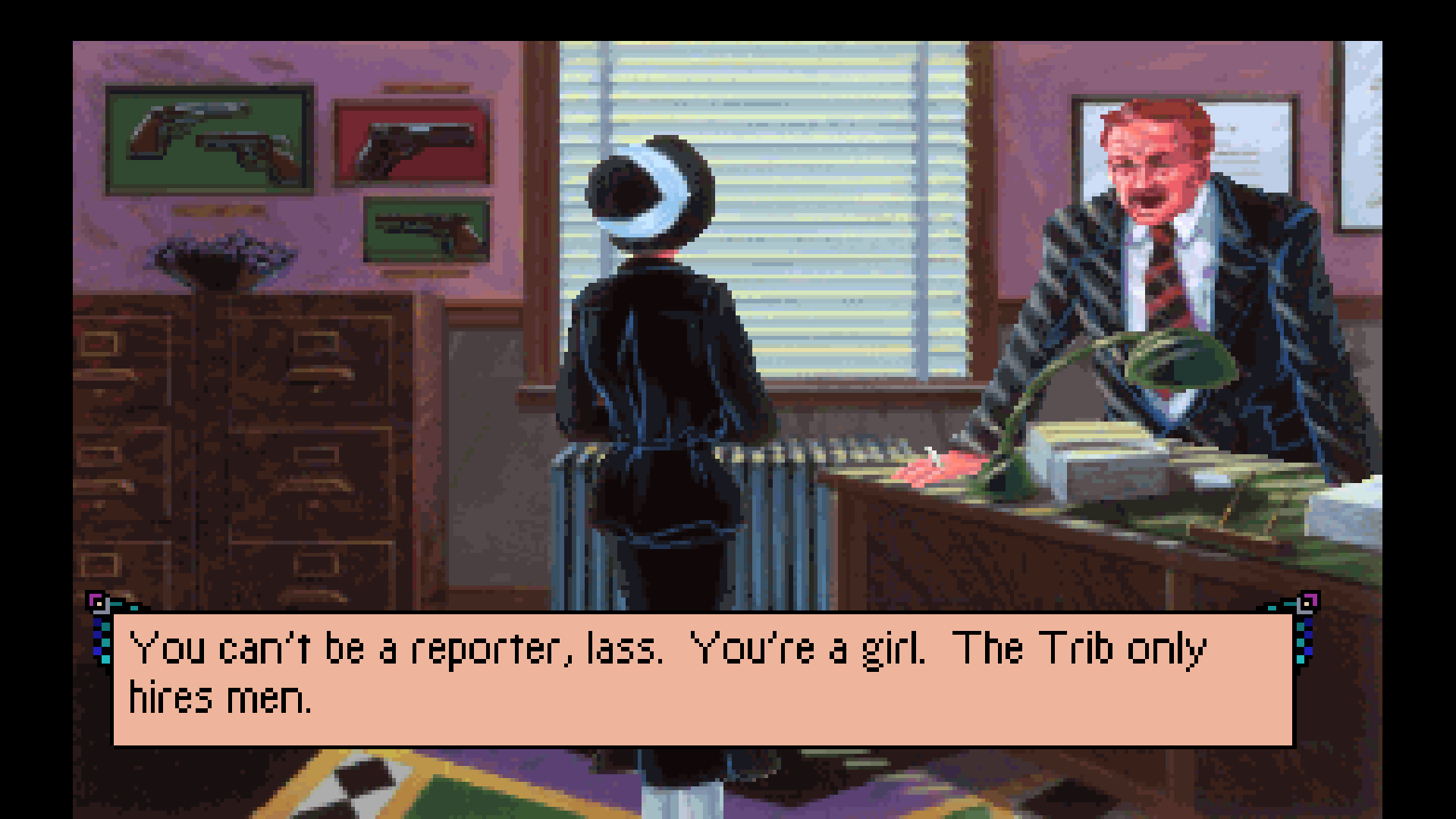
It’s the heart of 1920s Prohibition. You’re an intrepid young reporter assigned to cover a high-profile crime: the theft of a priceless artefact from a prestigious museum in New York City. It's a great setup, though revisiting the premise of Laura Bow: The Dagger of Amon Ra is an exercise in masochism for a writer—landing a full-time job at a major newspaper fresh out of college is quite the pipe dream in 2020. But you’re no ordinary Tulane grad—you’re Laura Bow, and as far as you know, the world is your oyster.
Laura Bow has never been as famous as King's Quest, but these two games were genuinely groundbreaking
Before Sierra made the Laura Bow adventures, King Quest’s Rosella had the honor of being the first female protagonist in graphic adventure games (for all the pedants out there, the first ever female video game character was technically Kangaroo in 1982). But it was Laura who left a greater mark on Sierra On-Line history with her "nose for news." Bizarre murders fall into her lap, first in The Colonel’s Bequest (1989) and then in The Dagger of Amon Ra (1990). These opened a captivating window into the best and worst of 1920s American society, clichés and all (including a few painfully racist parts).
Laura Bow has never been as famous as King's Quest, but these two games were genuinely groundbreaking. The Dagger of Amon Ra particularly brought new layers of complexity to adventure game storytelling, with intricate subplots and tantalizing unreliable information that fueled imaginative theories.
With her charming Southern drawl and red curls, Laura—a tribute to silent film star Clara Bow—is often underestimated by other characters for her youth and gender. The Colonel’s Bequest was tense, dark, and moody, a welcome change from Leisure Suit Larry and the early Space Quests which targeted men and were vehicles for lowbrow (and literal toilet) humor. Laura, decked out in demure stockings and a sensible pocketbook, was a far cry from the typical Sierra adventure protagonist.
Although its text parser interface resulted in rather passive interaction, The Colonel’s Bequest was an atmospheric triumph. Its setting, a decrepit plantation on an isolated island, was ripe for a classic murder mystery. As a woman in the 1920s, Laura mostly eavesdrops on conversations and gathers clues through observation.
Sierra veteran Josh Mandel beta tested The Colonel’s Bequest, and was inspired by its more open format than their previous adventures, which allowed Laura to wander around more naturally to mirror the social paradigms of the day. "It gave the game a better sense of realism, that you could be in one place and miss something that was going on in another place," he says. "But that’s also what made it such a difficult game to test; we had no way of knowing what was supposed to happen in other areas of the game, so we couldn’t tell if those events were happening or not."
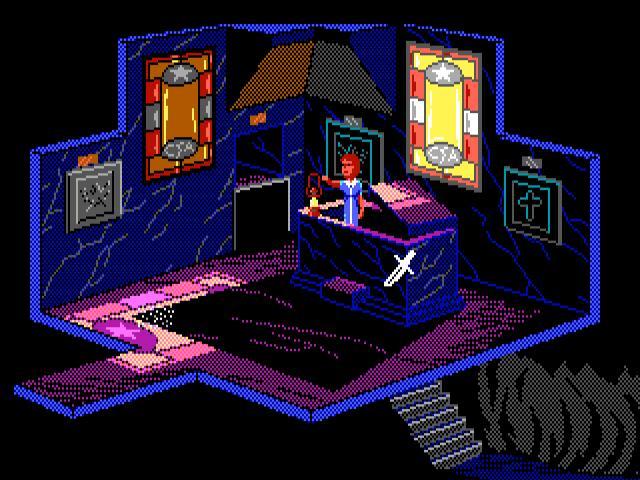
In The Dagger of Amon Ra, set a year after The Colonel's Bequest, Laura’s investigation techniques still revolve around "spying," but this time, our girl is more confident. She has much more agency with clues, objects, and puzzles while retaining her role as reporter and observer. It’s an implicit narrative choice that plays beautifully off of her image as a naïve young visitor, new to both the city and her job.
The biggest gaming news, reviews and hardware deals
Keep up to date with the most important stories and the best deals, as picked by the PC Gamer team.
Most noticeably, while Laura was the heroine of The Colonel’s Bequest, it was Dagger that really fleshed out her personality. "I knew that we could not have Laura still in the house on the bayou," Mandel explains. "She had to have progressed and become slightly older, so I suggested that, fresh out of journalism school, she become a cub reporter for a great metropolitan newspaper, where she would have access to more of the kind of lurid crimes that the first game featured."
The Roaring Twenties
The Dagger of Amon Ra uses its cosmopolitan setting as a vehicle to examine a fascinating time period for America. And for the most part, the heart of the Laura Bow experience does just that—it offers a detailed representation of 1920s New York, at least from the perspective of a relatively well-off white woman. There are no ladies’ facilities in the newsroom, men openly sneer at her, and as a sheltered transplant from New Orleans, she’s a stranger to speakeasy culture. As the Tribune’s first female hire, Laura’s constant lurking is treated as a nuisance. In Act 2, she has to eavesdrop (very unsubtly) on 14 different conversations to get to Act 3.
The death scenes were Bruce’s (slightly perverse) imagination at work
Writer Josh Mandel
Mandel, an ex-standup comedian who worked closely with designer Bruce Balfour to write The Dagger of Amon Ra, ended up recommending Balfour to Roberta Williams to design the game.
"Originally, Roberta [Williams] asked me to design Laura Bow 2 (as it was then called)," Mandel recalls, but he felt that Balfour, a new face in Sierra’s production design department, was much better suited to a murder mystery. Today we can thank Balfour for the gorgeous aesthetics in Dagger, including the elaborate setpieces in the museum. He pored over art styles before finding inspiration in the work of 1920s illustration icon JC Leyendecker, who created some of America’s best-known commercial art and mentored Norman Rockwell.
In addition to the game, the physical box material was also important to Balfour—there’s one especially memorable page of him posed as one of the murdered characters. "The death scenes were Bruce’s (slightly perverse) imagination at work," says Mandel. And they were great.
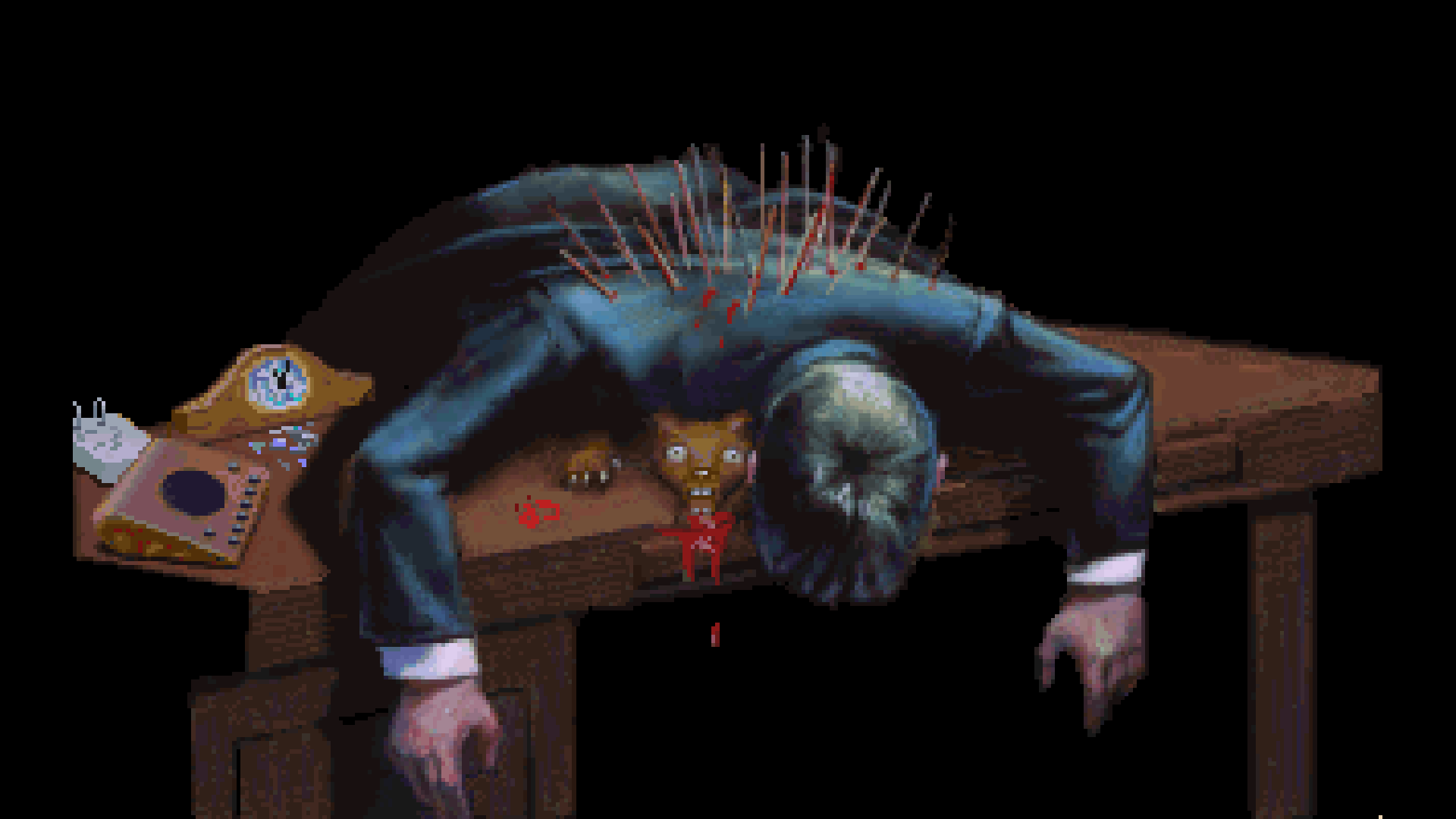
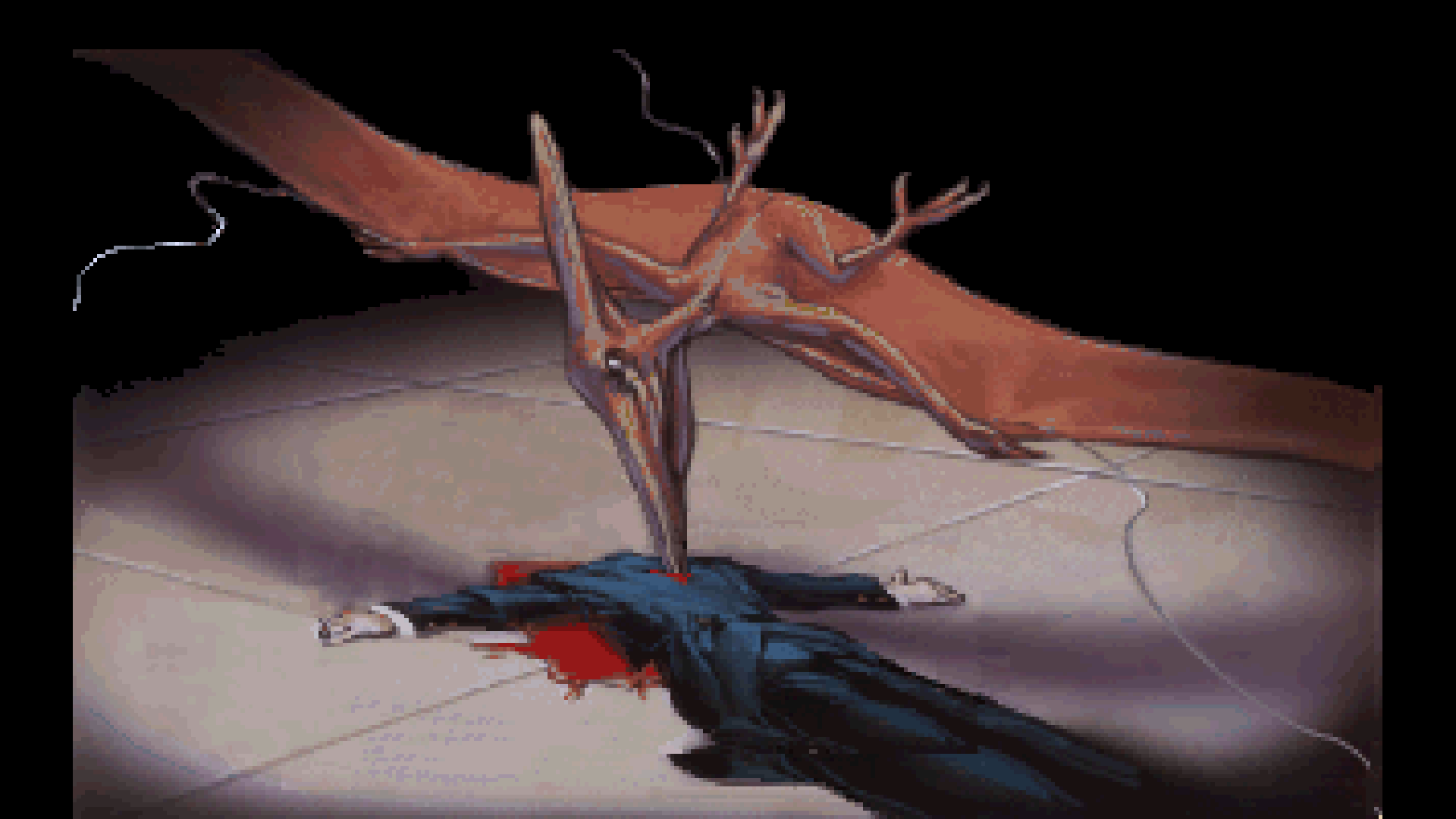
"Of course, he wanted each death to be tied into the museum in some appropriate and horrific way. I seem to recall that [Sierra designer and writer Lorelei Shannon] ... provided the inspiration for one of them: the Dermestid beetles, used to strip bones of their remnant flesh and fur."
The museum was an ideal environment for Laura to explore—contained, but endlessly engaging. "Something about ancient Egyptian lore seemed like a reasonably exotic and mysterious topic for the central mystery, around which all the murders would occur," says Mandel, "and a dagger itself represented danger, and foreshadowed the kind of mayhem with which the game is packed."
The mayhem isn’t just limited to murder—The Dagger of Amon Ra also briefly (and imperfectly) touches on the effects of colonialism. The story revolves around the 1920s Egyptology boom, spurred by British archaeologist Howard Carter’s "discovery" of King Tutankhamun’s tomb in 1922. It does try to weave a degree of political realism into its writing. The fictional dagger, like Egypt’s real looted ancient treasures, was "discovered" by the arrogant Dr. Pippin Carter and taken to America. Its ownership is a contentious issue repeatedly raised by the Egyptian characters Rameses Najeer and Dr. Ptasheptut "Tut" Smith. Naturally, their petitions fall on deaf ears.
"I did not do any first-hand research, as my role in crafting the game was so broad and shallow," Mandel says, noting that there wasn’t much of a budget for travel, nor a lot of Egyptology happening around Sierra’s home base of Oakhurst, California.
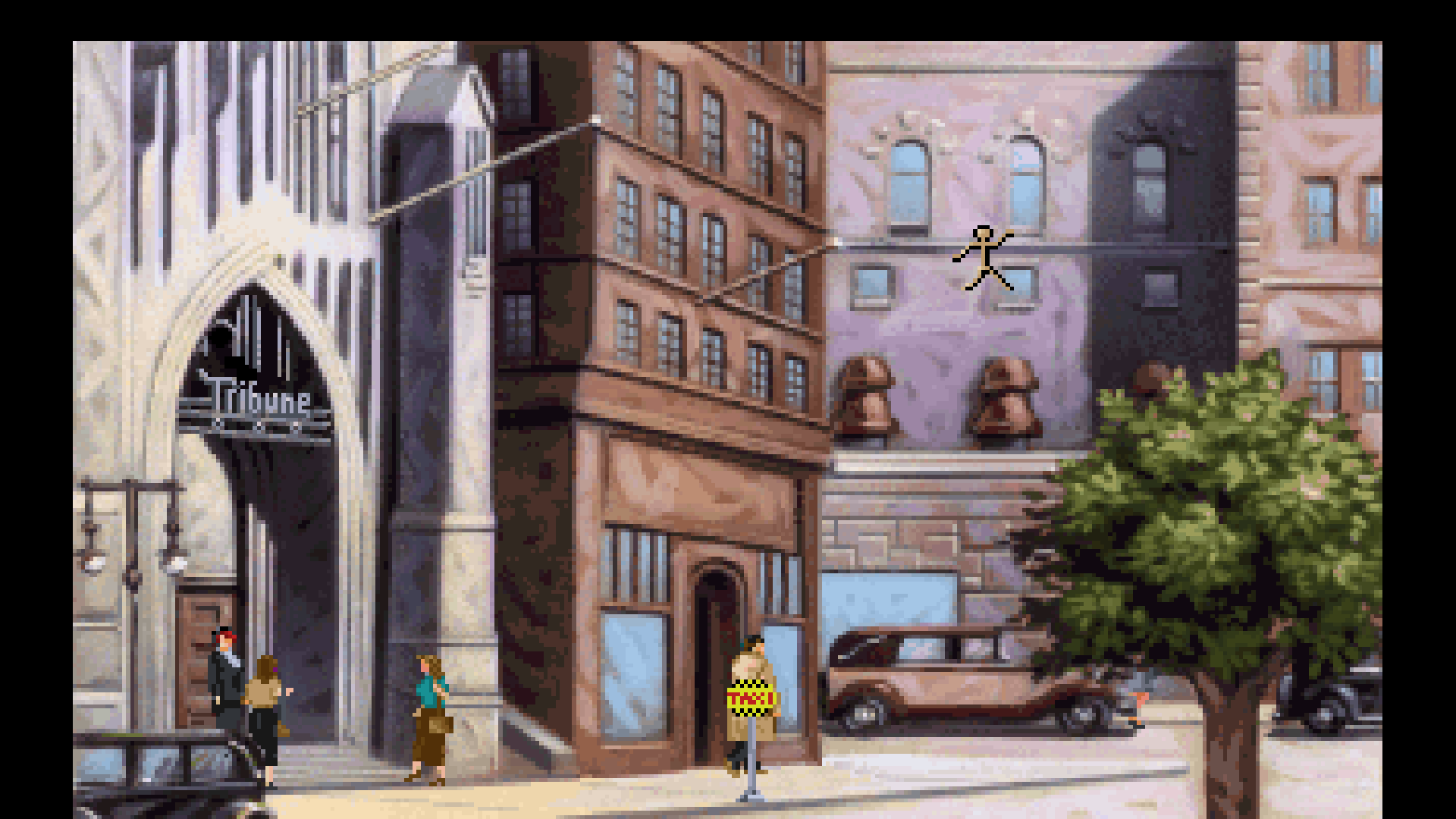
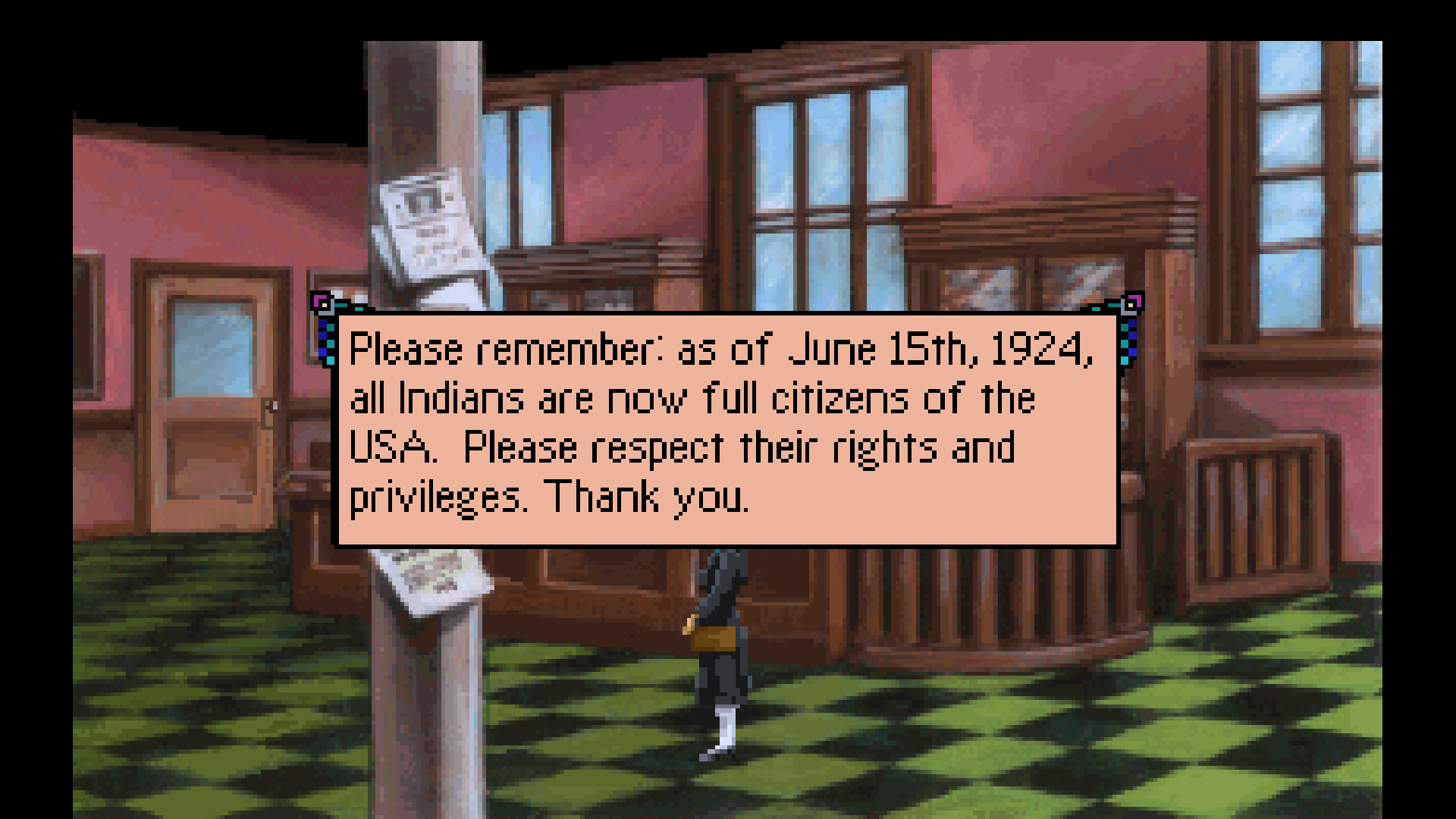
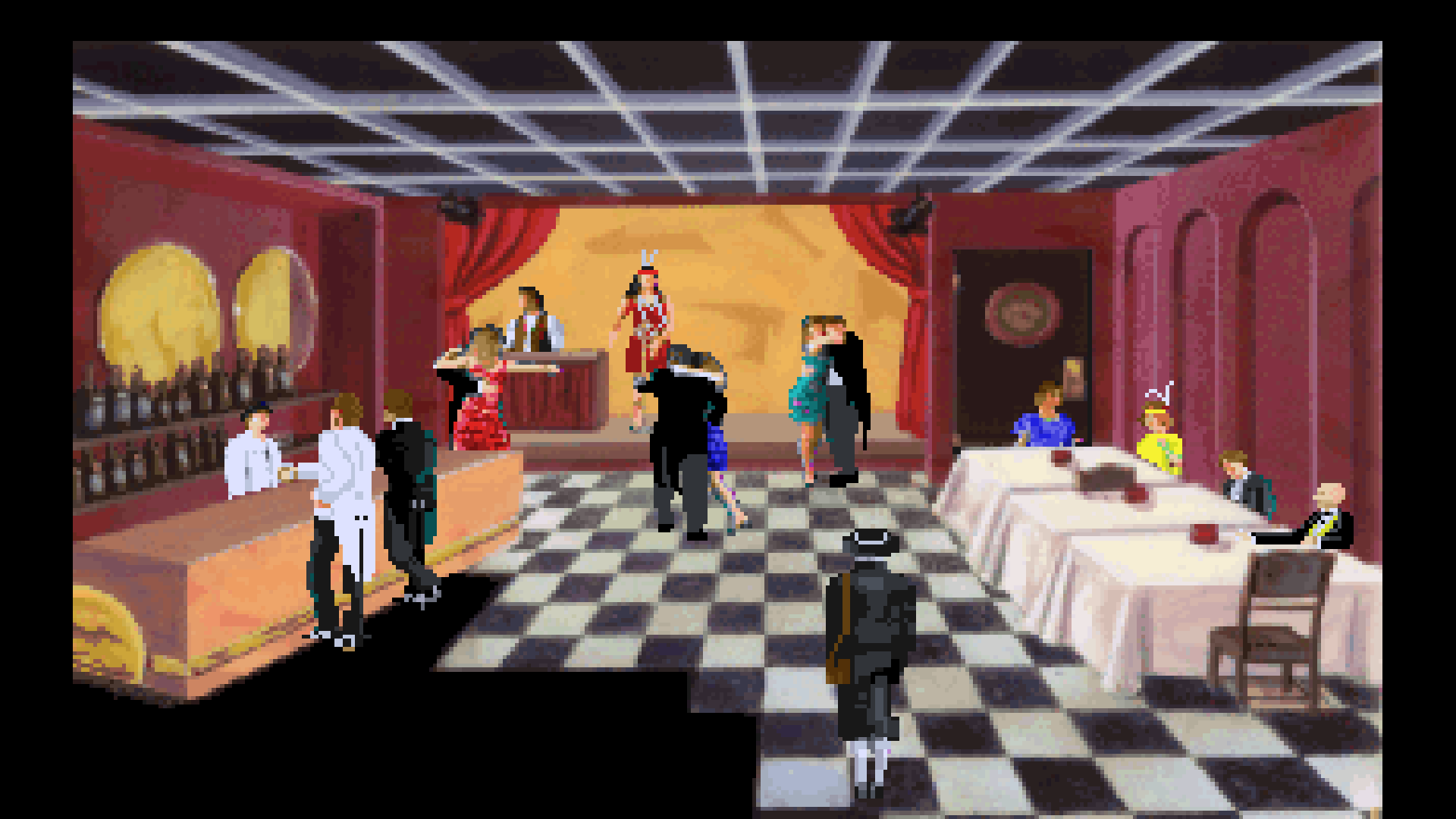
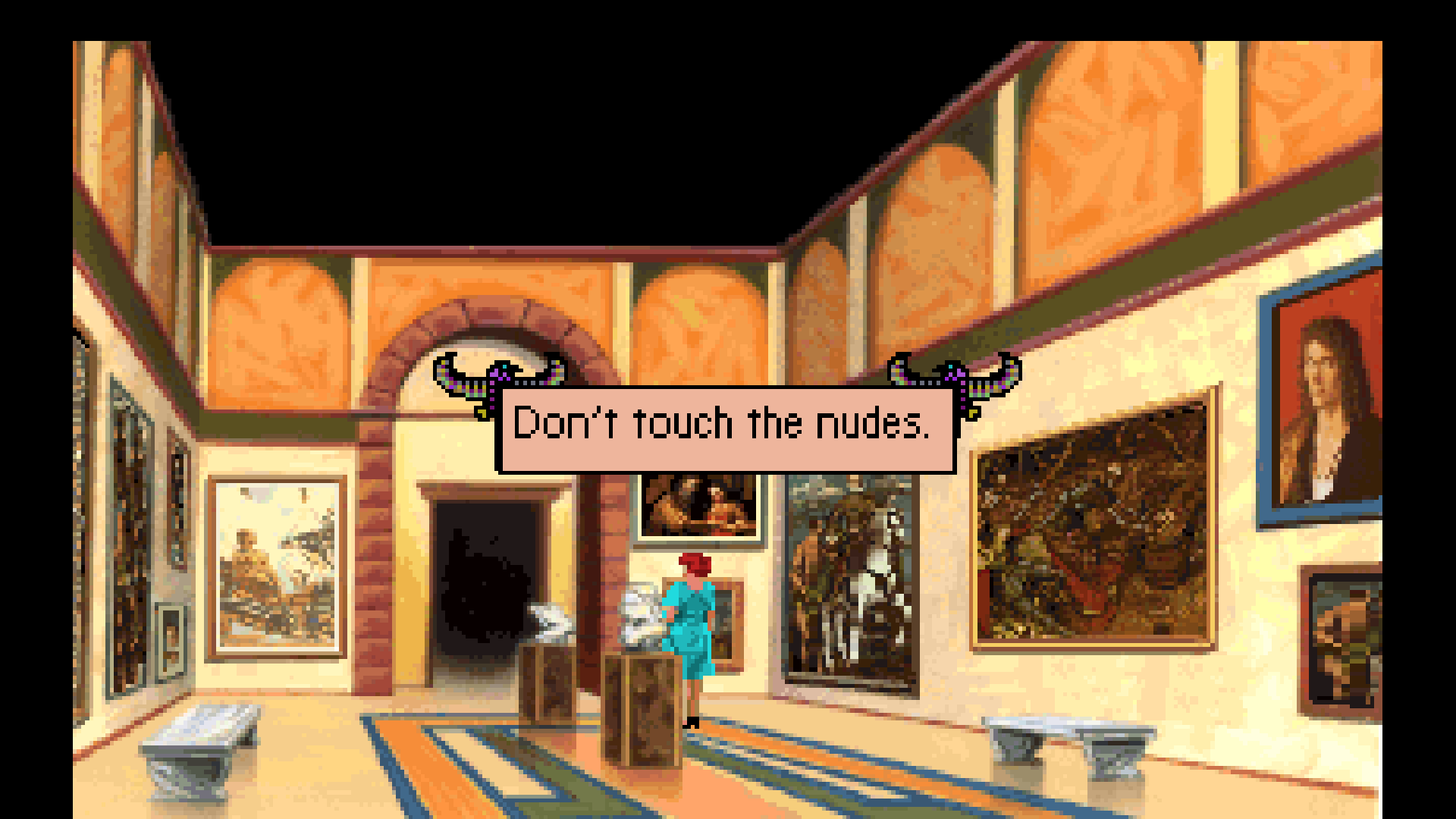
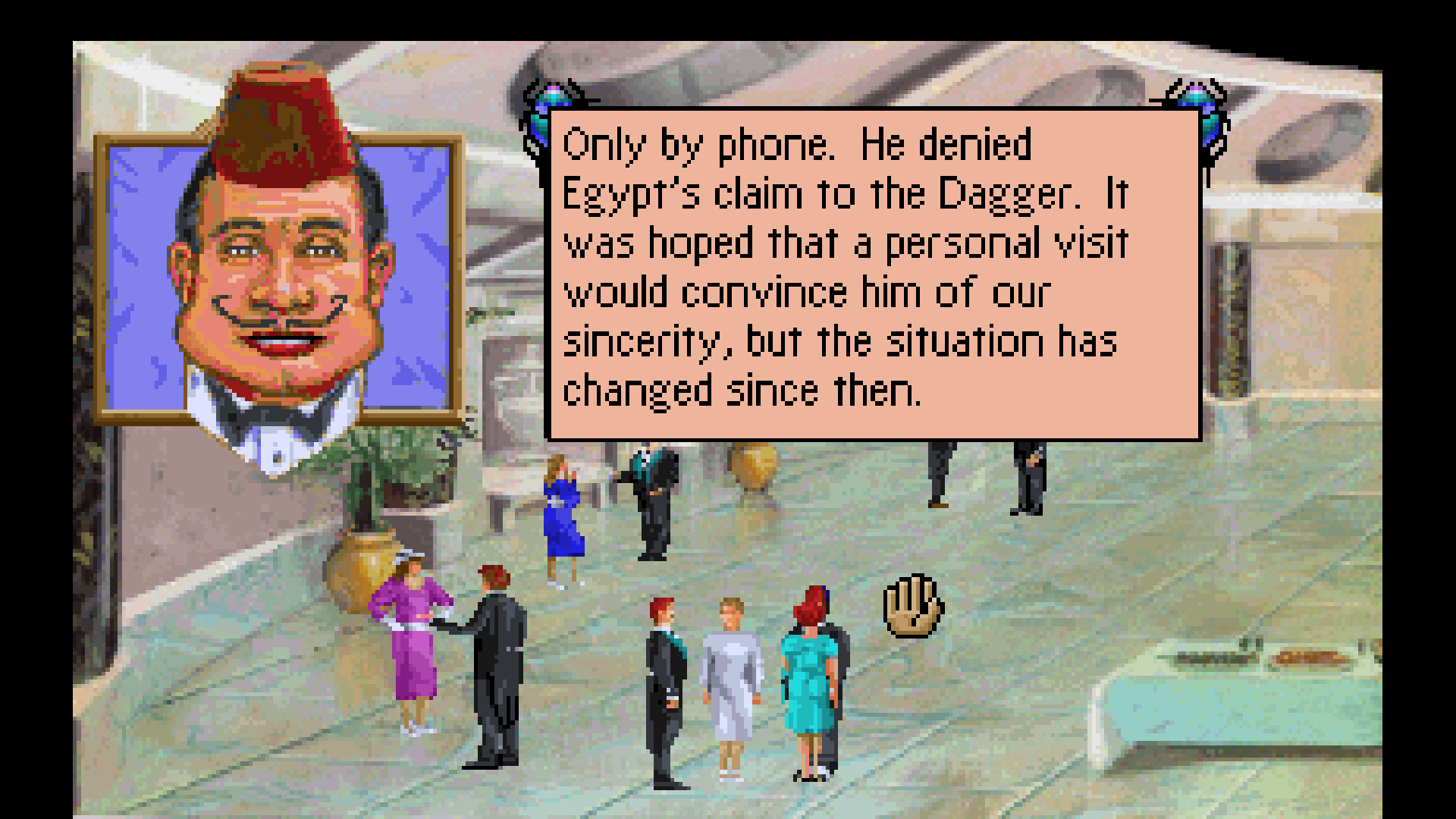
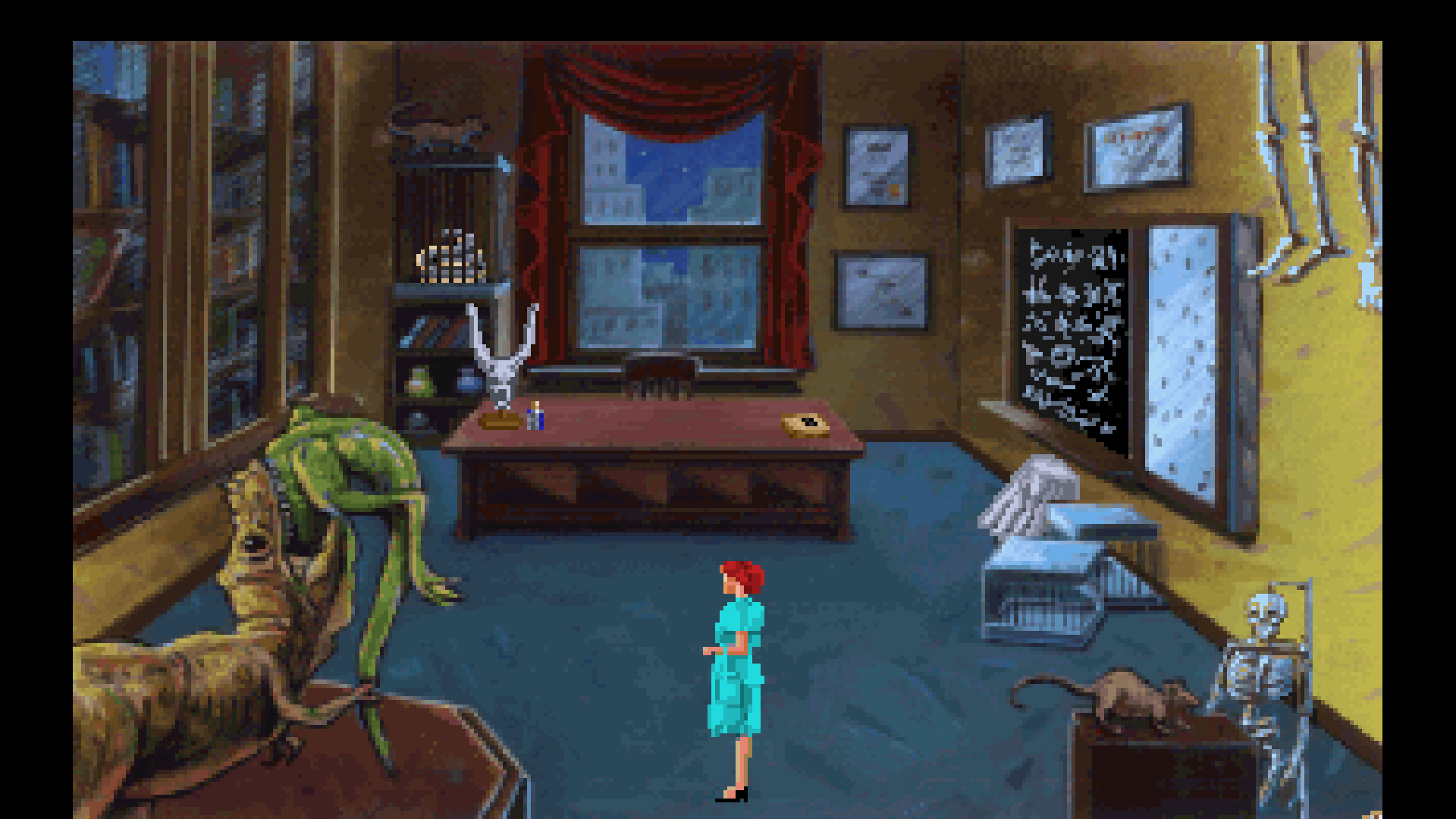
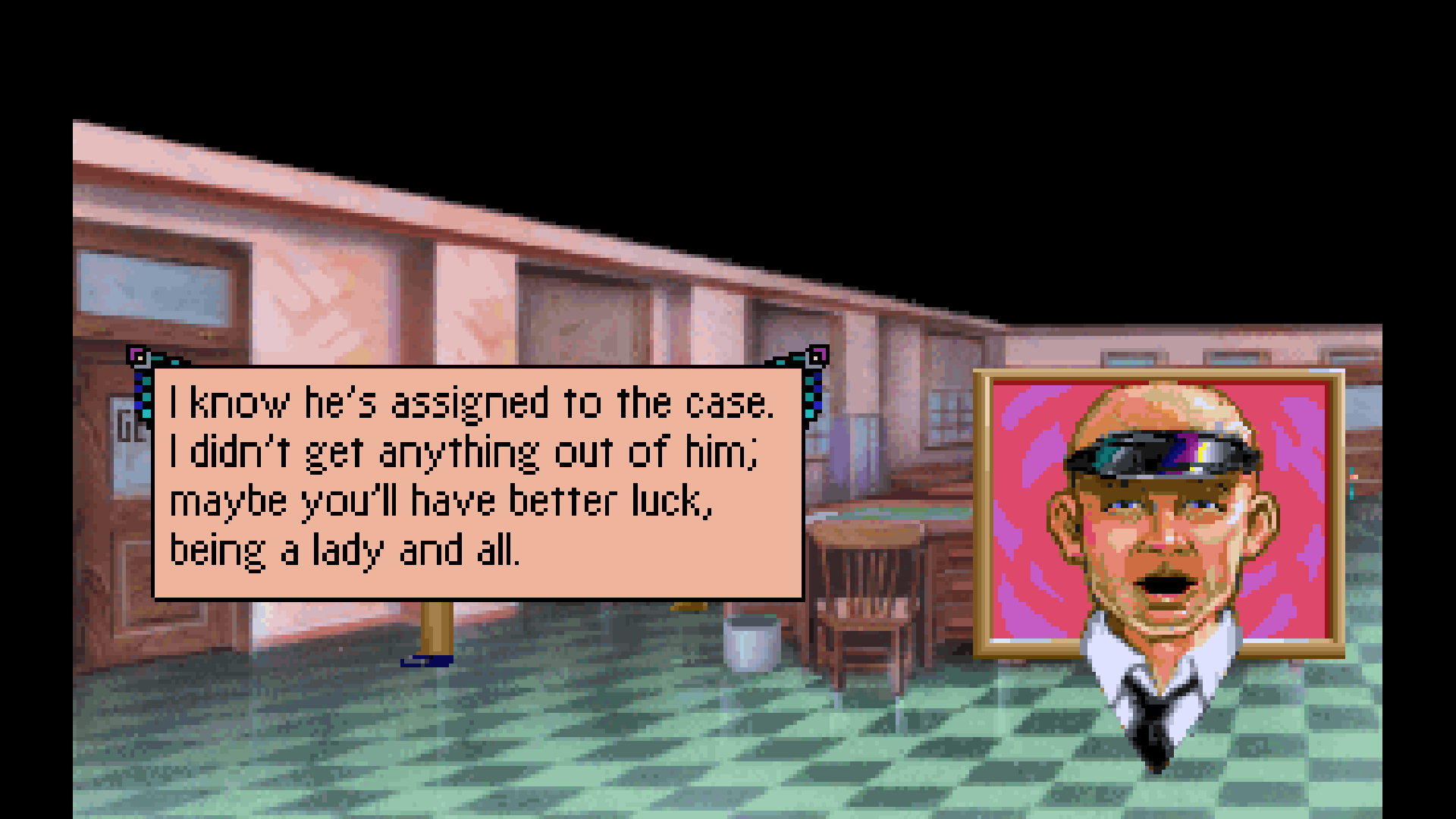
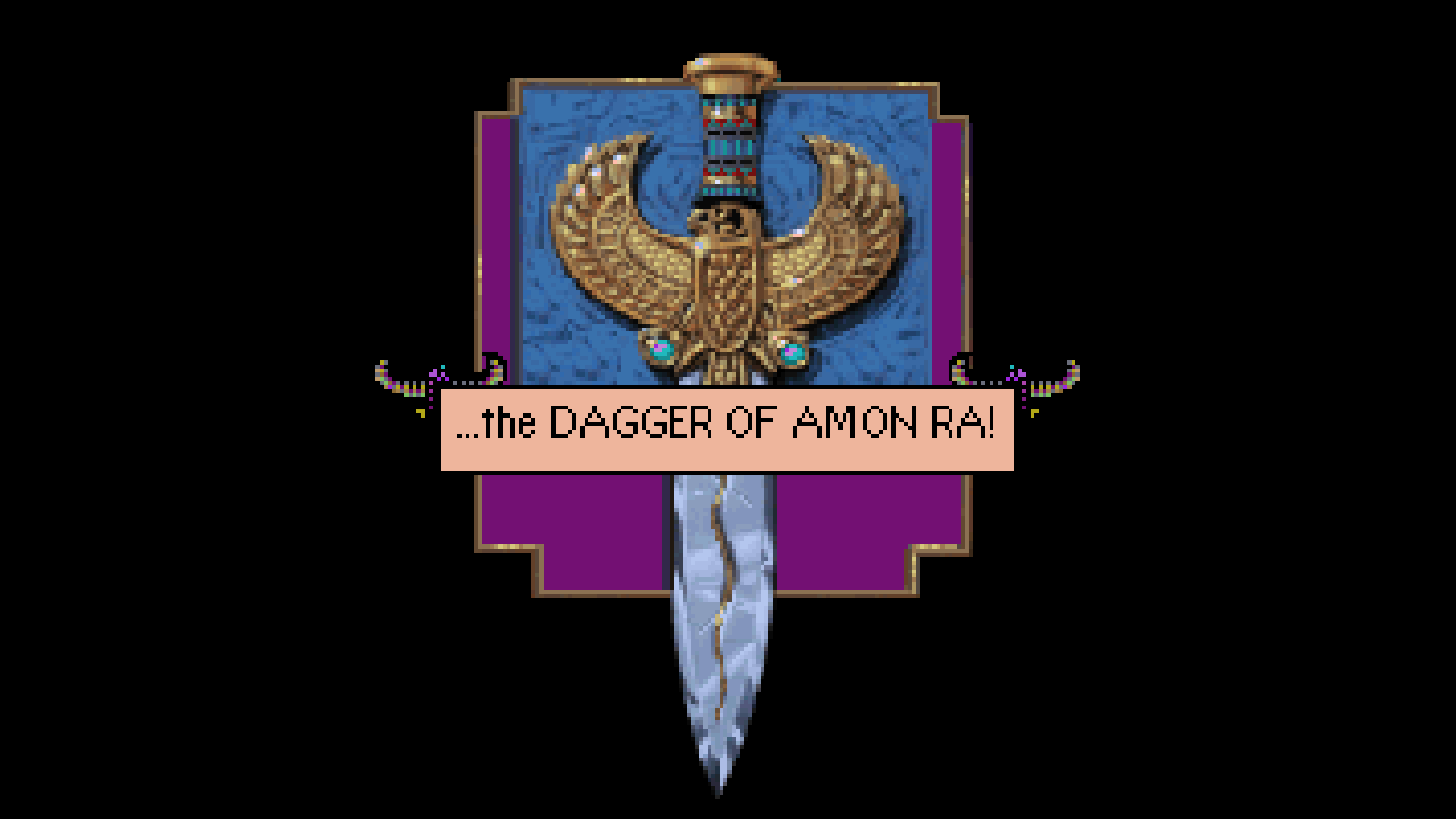
Despite a strong narrative that draws on multiple world cultures, Dagger still ends up relying on poor cultural stereotypes. Dr. Smith is the quintessential sexist Arab male and speaks in painful cliches ("as clear as the waters of the oasis," he quips in the introduction). Lo Fat, the Chinese laundry owner, has a heinous accent and slitty eyes in the lineage of Hollywood yellowface. It says a lot about how Sierra believed Asian characters would best be represented in the 1920s while preserving the game’s light, engaging tone. It’s the end result of having a homogenous creative team, and a reminder that the edgy hallmarks of '80s standup humor don’t translate well into other media.
In The Colonel’s Bequest, the only black character is Celie, who (bafflingly) feels obliged to stay on the plantation because her parents were slaves there. Both games feature 'slutty French women' that serve as the butt of predictable boys’ club jokes; the male gaze from other Sierra games lives on in a stream of derisive jokes directed against them. And while Laura’s world has definitely grown since the first game, her movements in Dagger are still largely confined to an affluent section of New York society—several characters warn her away from docks, where she meets her love interest Steve Dorian.
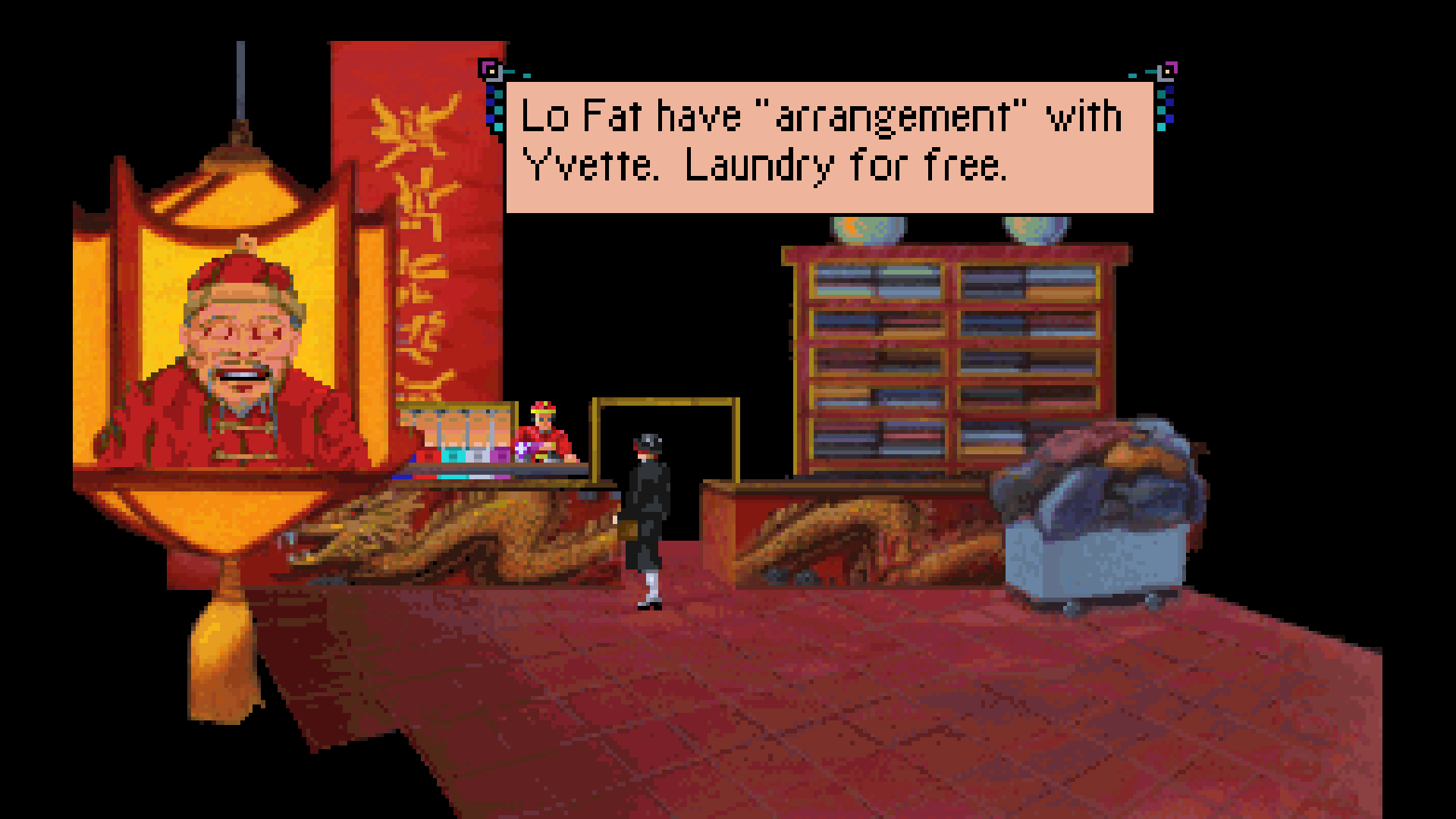
At the same time, Dagger makes small nods to other cultural developments in American history—a flyer at the police station reminds readers that Native Americans enjoy full citizenship as of June 15, 1924. Laura’s Tribune colleague Crodfoller T. Rhubarb, a seasoned newsman, becomes her assistant at the end of the game in recognition of Laura’s outstanding work.
It’s clear that Laura Bow tried to do a lot, and not everything worked out perfectly. But it’s still one of Sierra’s most important series—yes, even at just two games—not simply for its style, but for its ambitious narrative legacy and atmosphere. After being chronically overlooked while the Quests dominated Sierra history, both are a joy to replay in 2020. Dagger is a particular gem because of its setting—it’s hard to think of a single other adventure game set in the unique bubble of Egypt-crazed 1920s New York.
Today, there’s an unofficial new game in the works—Laura Bow and the Mechanical Codex, a fan-made project by Estonian developer NineZyme Entertainment. Mandel is all for the idea of fan-made tributes, with a few caveats. "I don’t think fan games should rewrite canon," he says. He also expresses concern for Activison’s legal wrath. But for Sierra’s smaller, less famous games, it’s fans who are keeping them alive in the 21st century, with the same passion for history that made Laura Bow so inspired.
"I love the idea that fans will continue to write games based on Laura Bow, and on any other Sierra series, as those properties all seem to have been abandoned," says Mandel. "I can think of no greater tribute to the original games, and the teams that developed them."
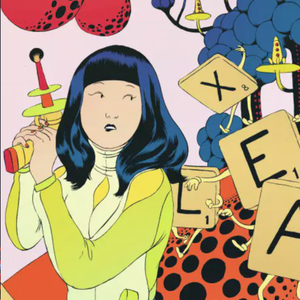
Alexis Ong is a freelance culture journalist based in Singapore, mostly focused on games, science fiction, weird tech, and internet culture. For PC Gamer Alexis has flexed her skills in internet archeology by profiling the original streamer and taking us back to 1997's groundbreaking all-women Quake tournament. When she can get away with it she spends her days writing about FMV games and point-and-click adventures, somehow ranking every single Sierra adventure and living to tell the tale.
In past lives Alexis has been a music journalist, a West Hollywood gym owner, and a professional TV watcher. You can find her work on other sites including The Verge, The Washington Post, Eurogamer and Tor.

